1: How many teeth do adult horses typically have?
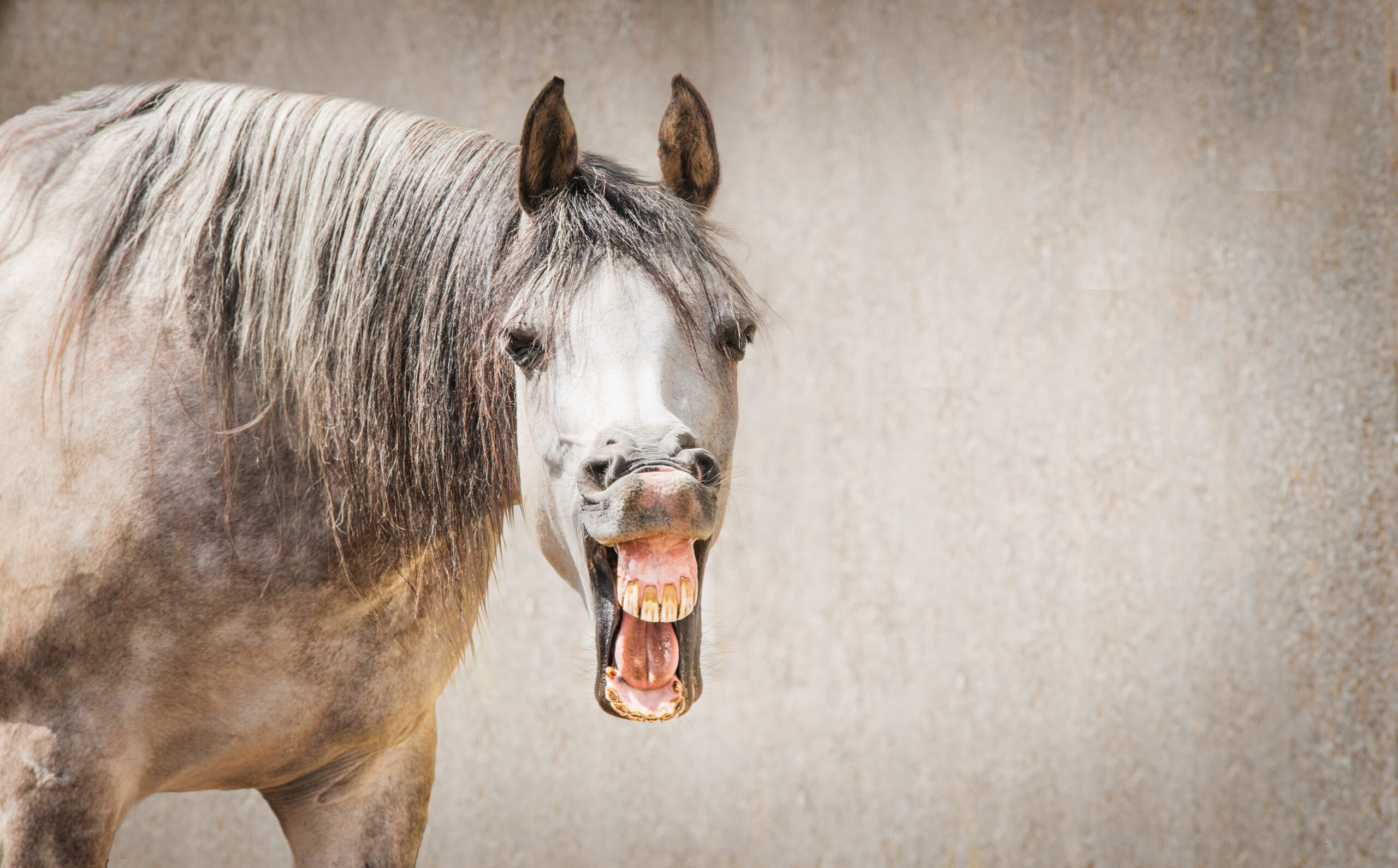
Hint: These grass-munching machines are packing more than you might think. Their dental array is a testament to evolutionary engineering, designed for a lifetime of grinding tough plant material. Think about how their constant chewing lifestyle might influence their tooth count.
A) 24-28
B) 32-36
C) 36-44
D) 48-52
Answer: C) 36-44
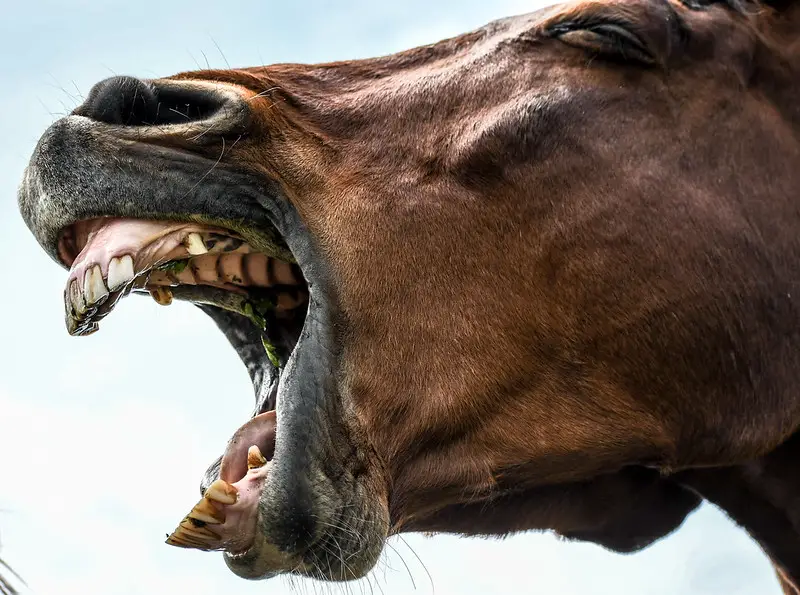
Adult horses boast an impressive set of 36-44 teeth, depending on gender and the presence of canine and wolf teeth. This dental arsenal includes 12 incisors, up to 4 canines, 12 premolars, and 12 molars. It’s a mouthful that puts our human chompers to shame!
What’s truly remarkable is that horse teeth continue to grow throughout their lives, erupting about 1/8 inch per year to compensate for wear. This continuous growth, known as hypsodont dentition, allows horses to maintain effective grinding surfaces for their herbivorous diet. Their teeth are like nature’s own conveyor belt, constantly replacing worn-out surfaces to keep these equine eating machines in top form.
2: What unique ability allows horses to sleep while standing up?
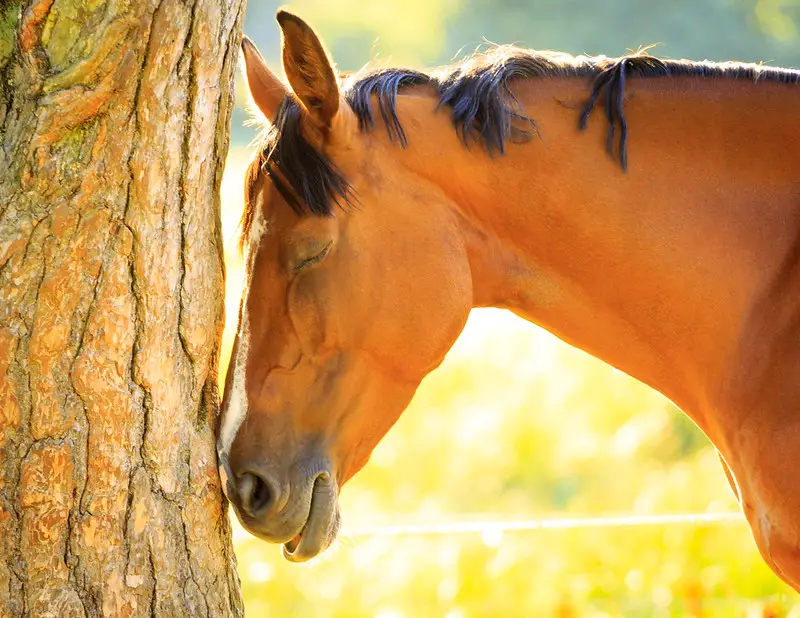
Hint: These equine nappers have mastered the art of catching Z’s without hitting the hay. It’s not about balance or strength, but a clever bit of anatomical engineering that lets them doze off while keeping one hoof in the waking world.
A) Rotating sleep cycles
B) Locking leg joints
C) Balancing on three legs
D) Constant muscle tension
Answer: B) Locking leg joints
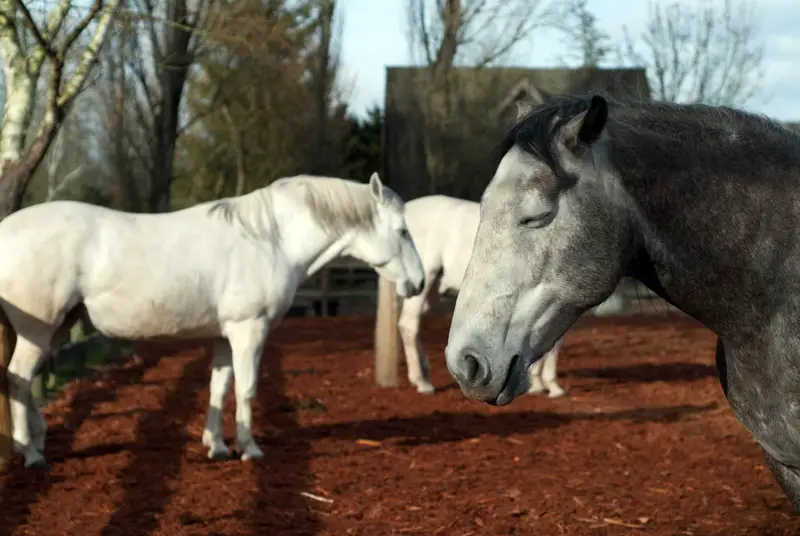
Horses come equipped with a built-in biological kickstand called the stay apparatus. This ingenious system of ligaments and tendons allows them to lock their leg joints in place, effectively turning their legs into living pillars that can support their weight without any muscle effort. It’s like having a built-in camping chair – perfect for those quick power naps between grazing sessions.
This standing snooze isn’t just a party trick – it’s a crucial survival skill. In the wild, lying down for too long makes a horse vulnerable to predators. With the stay apparatus, they can catch some light sleep while still being ready to bolt at a moment’s notice. However, horses do need to lie down for deep, REM sleep, which they typically do for only about 2-3 hours a day, often in short bursts.
3: What surprising cognitive ability do horses possess?
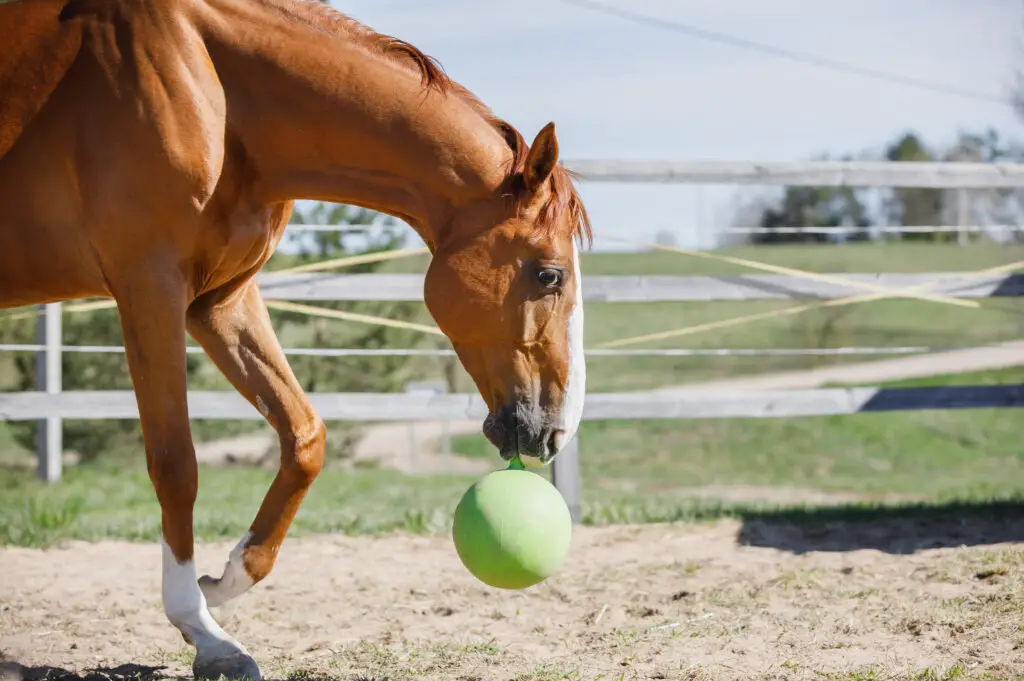
Hint: These equine Einsteins have a hidden talent that’s more than just horseplay. It’s a mind-bending ability that even human toddlers struggle with. Think less “Mr. Ed talking” and more “horse having an existential crisis in front of a magical pond.”
A) They can count to ten
B) They can use reflective surfaces strategically
C) They can solve complex puzzles
D) They can use tools
Answer: B) They can use reflective surfaces strategically
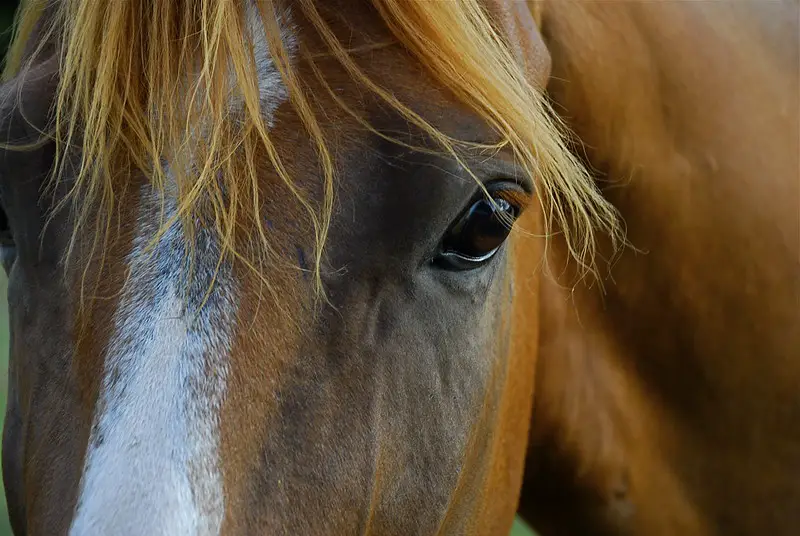
Horses aren’t just pretty faces – they’re self-aware pretty faces! These clever creatures can recognize themselves in mirrors, a cognitive skill that puts them in the same league as elephants, dolphins, and great apes. This isn’t just about being vain (though we’re sure some horses appreciate a good hair day). Self-recognition is a sign of higher intelligence and self-awareness, suggesting that horses have a more complex inner life than we once thought.
In mirror tests, horses have been observed using reflections to investigate marks on their bodies or check out areas they can’t usually see. It’s like they’re saying, “Hey, that’s me!” This ability goes beyond simple reflection reactions – it shows that horses have a sense of self, understanding that the image in the mirror is them and not another horse.
4: What makes a horse’s breathing different from other mammals?
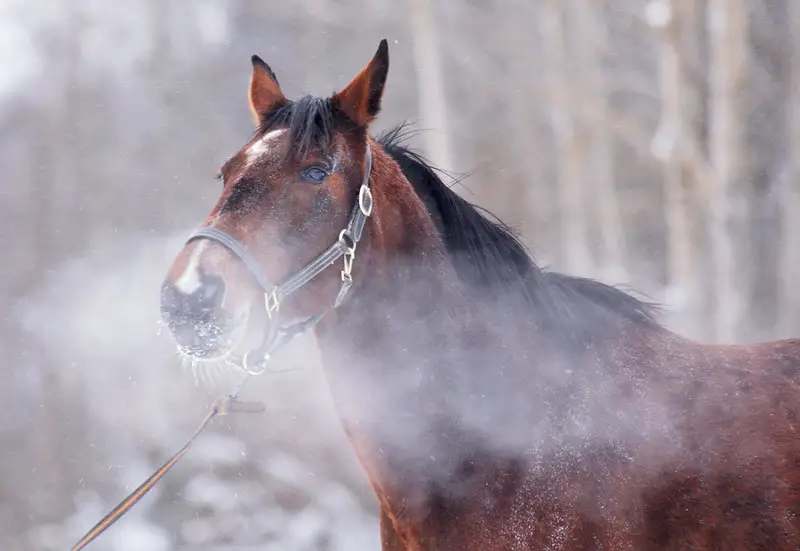
Hint: These four-legged wind machines have a breathing quirk that would make most animals gasp! It’s not about having super-lungs or a secret gill – it’s all about being a bit nosey. Think of it as nature’s way of saying, “Breathe through your nose, it’s polite!”
A) They can only breathe through their nose
B) They can hold their breath for extended periods
C) They breathe twice as fast as humans
D) They can oxygenate blood through their skin
Answer: A) They can only breathe through their nose
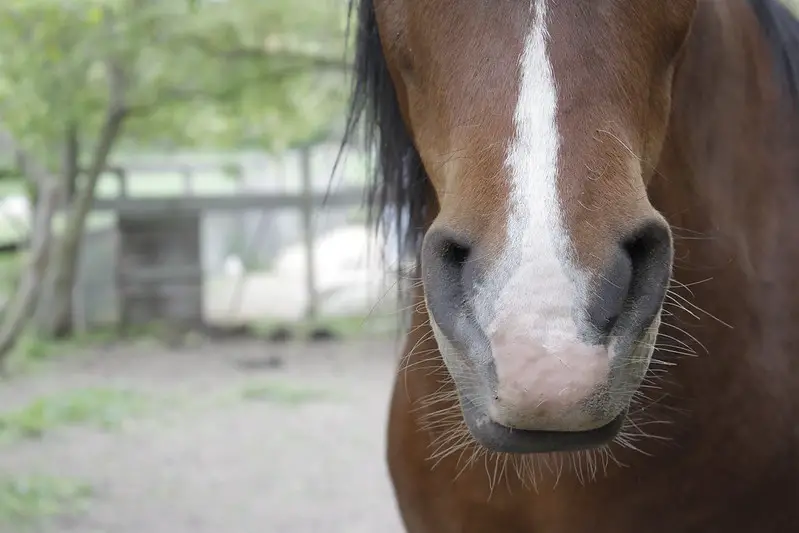
Horses are the ultimate nose-breathers – they physically can’t breathe through their mouths! This isn’t just a quirk; it’s a key feature of their anatomy. Horses are obligate nasal breathers, meaning their epiglottis (a flap in the throat) forms a tight seal with the soft palate, keeping the airway and food passage completely separate. It’s like having a one-way valve for air that’s always set to “nose.”
This nasal-only breathing has its pros and cons. On the plus side, it allows horses to breathe more efficiently while running, as they don’t have to coordinate breathing with stride like mouth-breathers do. It also helps warm and filter air before it hits their lungs. The downside? Horses can’t pant to cool down like dogs, and any nasal obstruction can seriously impact their breathing. This is why you’ll never see a horse breathing hard with its mouth open after a race – they’re doing all that heavy breathing through the nose!
5: What anatomical feature sets them apart from other land mammals?
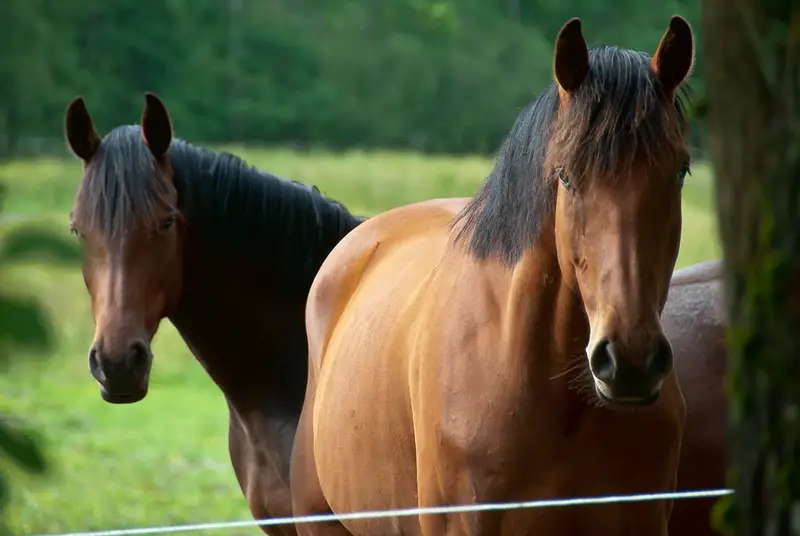
Hint: In the realm of terrestrial beasts, these creatures possess windows to the world that dwarf those of their fellow earth-dwellers. This anatomical marvel grants them a perspective on their surroundings that borders on the supernatural. It’s not just about size, but a fundamental reshaping of how they perceive and interact with the world around them.
A) The size of their brain
B) The length of their legs
C) The size of their eyes
D) The shape of their hooves
Answer: C) The size of their eyes
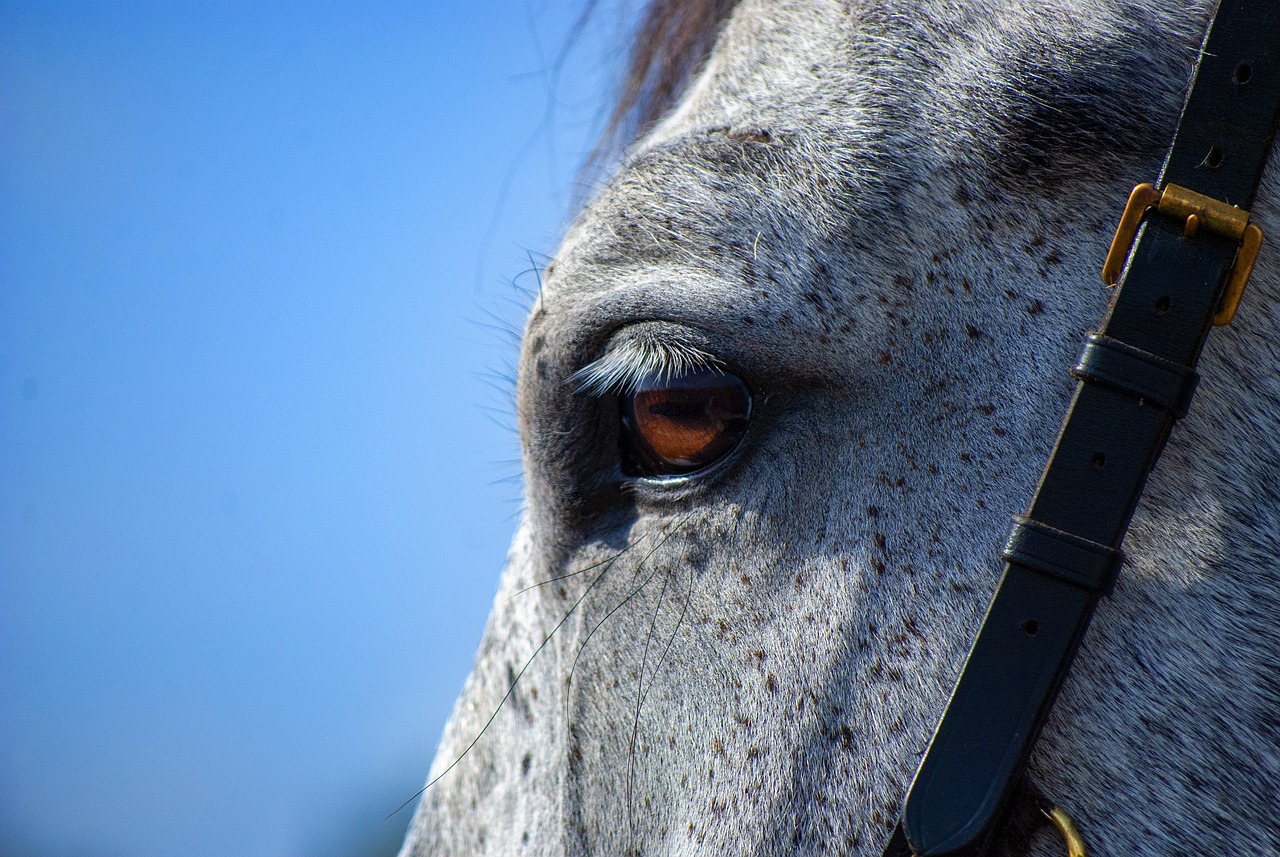
Horses are the panoramic champions of the animal world, with eyes so large they put most other land mammals to shame. These equine peepers are roughly eight times larger than human eyes, with a diameter of about 5 cm (2 inches). But it’s not just about size – it’s about giving horses a view that’s wider than a widescreen TV.
This ocular superpower, combined with the position of their eyes on the sides of their head, gives horses nearly 360-degree vision. They can see in front, to the sides, and even most of what’s behind them, all without turning their head. It’s like having built-in rearview mirrors! However, this wide-angle view comes with a trade-off: horses have two blind spots. One is right in front of their nose (about 3-4 feet ahead), and the other is directly behind their tail.
6: What makes a horse’s mane and tail so unique?
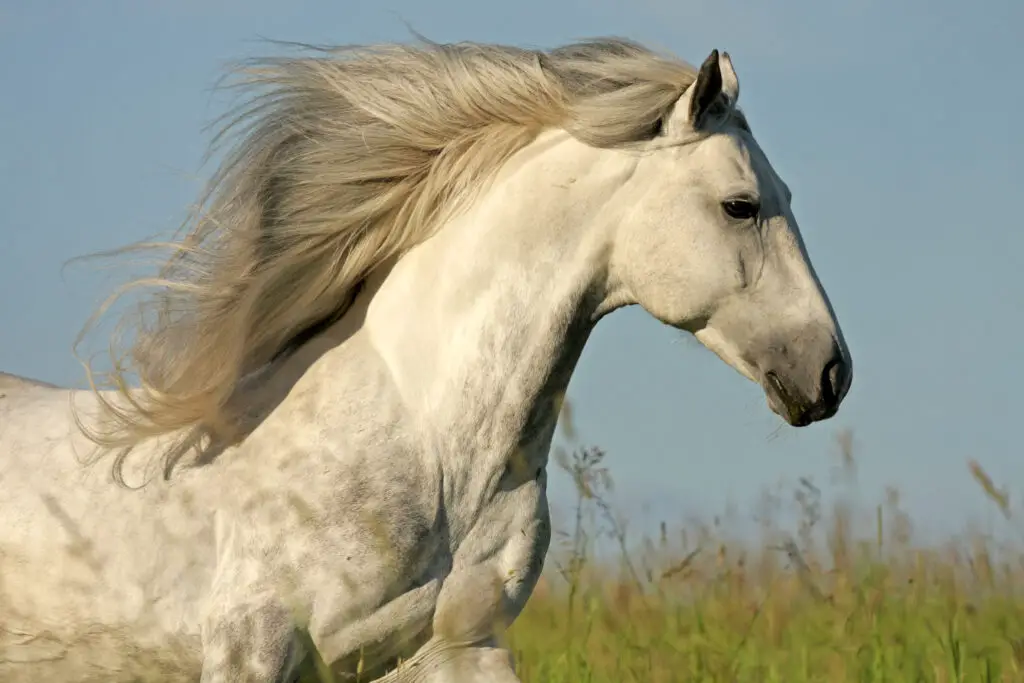
Hint: These flowing locks defy typical mammalian hair growth patterns, contributing to the animal’s iconic silhouette. Their peculiar characteristic is more akin to certain human body hair than to the fur of most four-legged creatures. It’s a feature that keeps on giving, quite literally.
A) They change color seasonally
B) They are water-resistant
C) They grow continuously throughout life
D) They can be used as sensory organs
Answer: C) They grow continuously throughout life
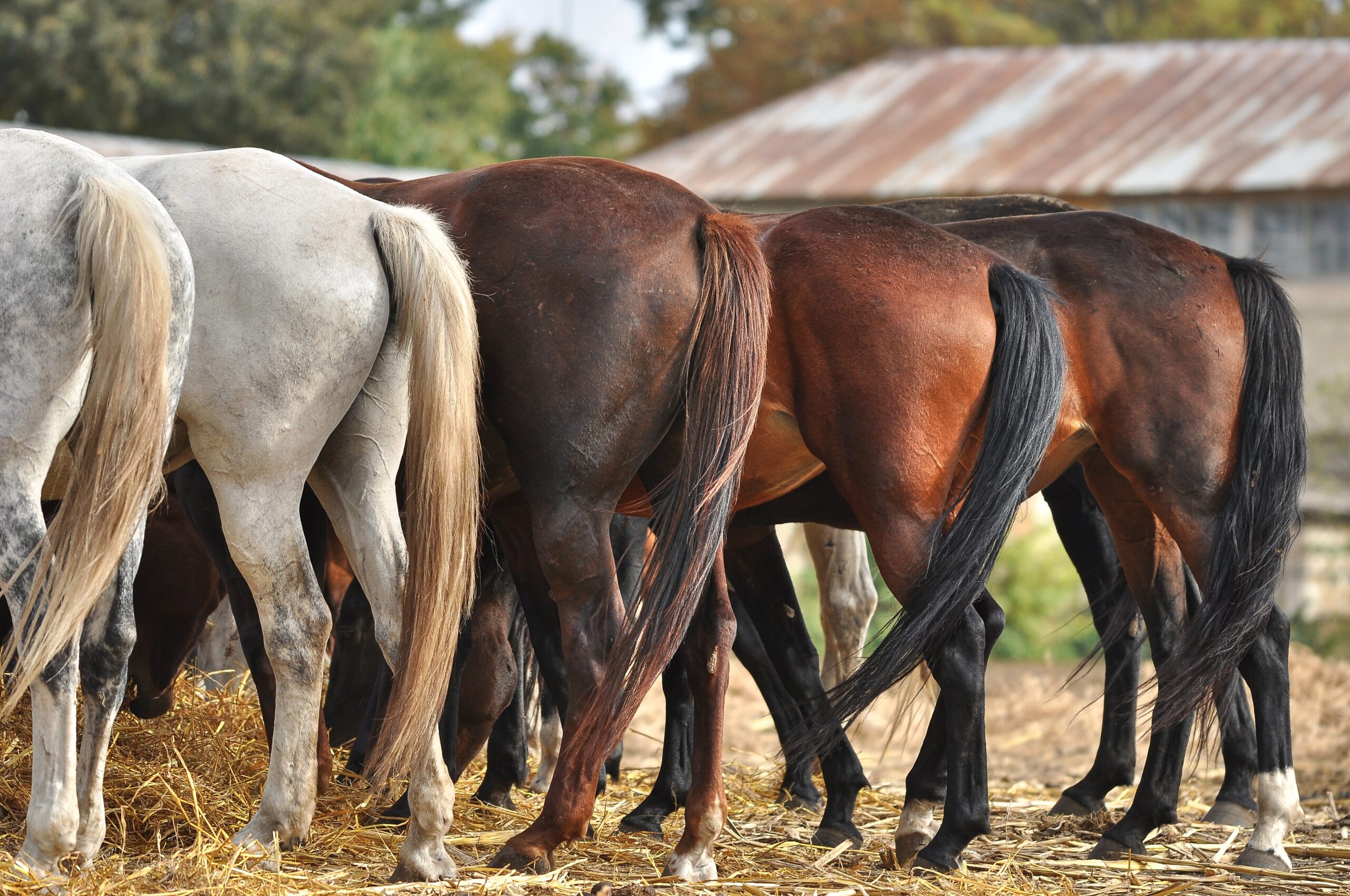
A horse’s mane and tail are like the Rapunzel of the animal world – they just keep growing and growing! Unlike the fur on the rest of their body, which follows a typical growth cycle, the hair of a horse’s mane and tail can grow to extraordinary lengths. It’s more similar to human scalp hair than to the coat of most other mammals.
This continuous growth allows for some truly impressive manes and tails, especially in breeds like Friesians or Andalusians, known for their flowing locks. The length and thickness can vary greatly between breeds and individuals, influenced by factors like genetics, nutrition, and overall health. This unique feature serves multiple purposes beyond just looking fabulous – the mane and tail help with temperature regulation, swatting away insects, and even social signaling among horses.
7: What is the fastest recorded speed of a horse?
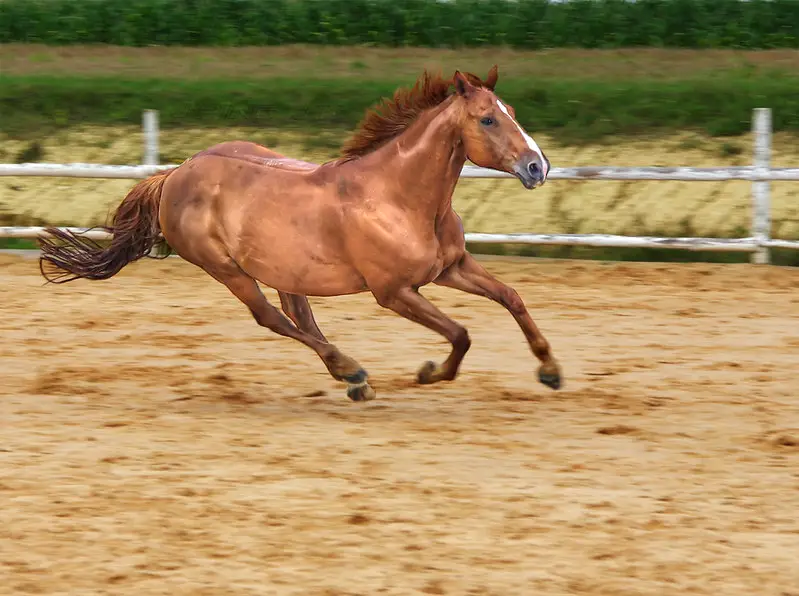
Hint: When these four-legged speed demons really put the pedal to the metal, they leave most land animals in the dust! We’re not talking about a leisurely trot here – this is full-throttle, mane-flying, thundering-hooves action. Think less “carousel pony” and more “equine rocket.”
A) Approximately 35 mph
B) Approximately 45 mph
C) Approximately 55 mph
D) Approximately 65 mph
Answer: C) Approximately 55 mph
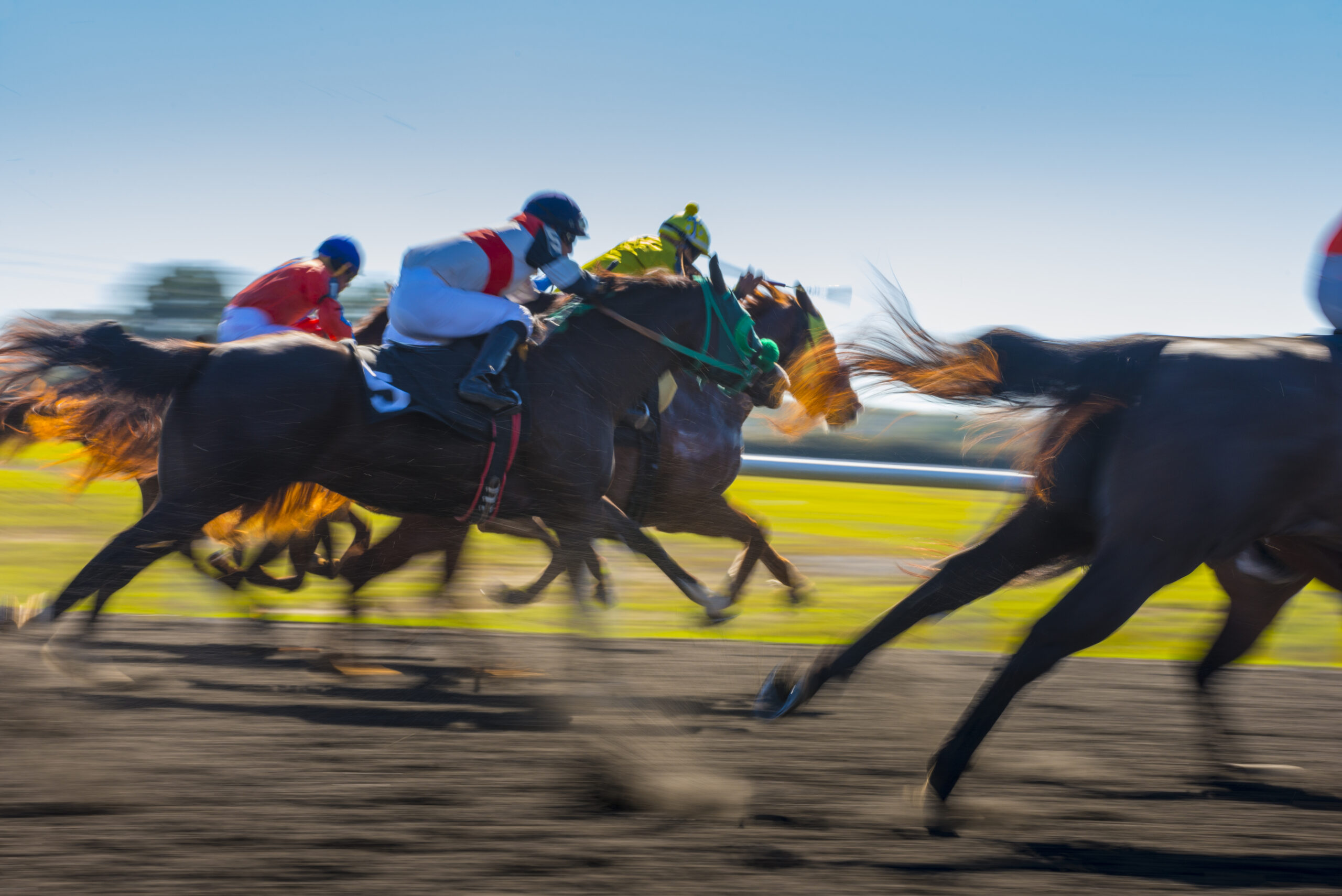
When horses decide to really hoof it, they can reach mind-boggling speeds of up to 55 mph! This isn’t just fast – it’s faster than the speed limit on many highways. The current record holder is a Quarter Horse who clocked in at 55 mph in a short sprint. To put that in perspective, that’s fast enough to outrun a charging elephant or keep pace with a cheetah for a short distance!
Of course, not all horses are created equal in the speed department. Thoroughbreds, famous for their racing prowess, typically max out around 44 mph but can maintain high speeds for longer distances. The speedy Quarter Horse, on the other hand, is built for quick acceleration and short sprints. Most everyday horses gallop at a more modest 25-30 mph. But regardless of breed, when a horse really opens up and runs, it’s a breathtaking display of power and grace.
8: How many muscles do horses have in each ear?
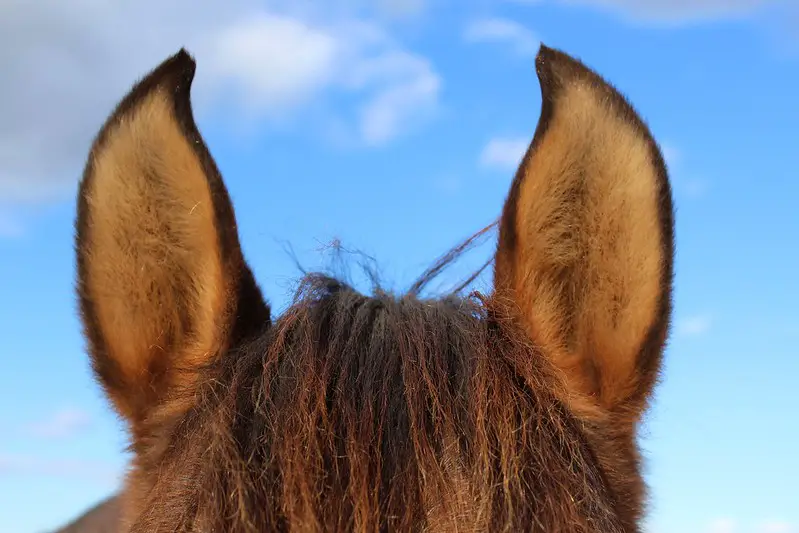
Hint: Hidden beneath the velvety exterior of these auditory sentinels lies a marvel of biological engineering. A network of sinew and tissue grants these creatures an almost supernatural control over their acoustic radar. This intricate array allows for a precision of movement that speaks to the importance of sound in their world.
A) 8 muscles
B) 12 muscles
C) 16 muscles
D) 20 muscles
Answer: C) 16 muscles
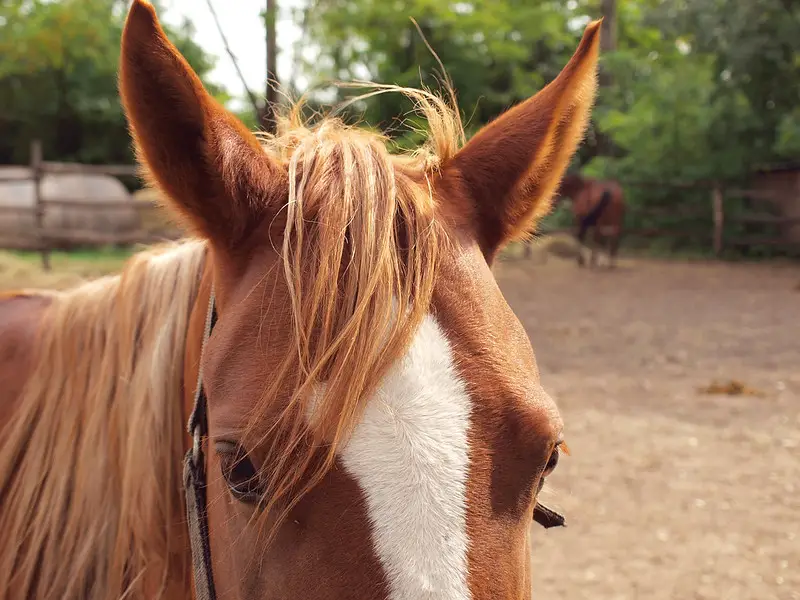
Horses are the Olympic gymnasts of the ear world, with a whopping 16 muscles in each ear! This muscular marvel allows them to rotate their ears 180 degrees, swivel them independently, and point them in nearly any direction. It’s like having two highly maneuverable satellite dishes attached to their head, capable of picking up the slightest rustle or whisper from any direction.
This ear-mazing ability isn’t just for show – it’s a crucial survival skill. In the wild, being able to pinpoint the exact location of a sound could mean the difference between detecting a predator in time or becoming its lunch. Horses can focus on different sounds with each ear, allowing them to monitor their environment in stereo. They also use ear position as a form of communication, expressing emotions and intentions to other horses.
9: What psychological condition can horses suffer from?
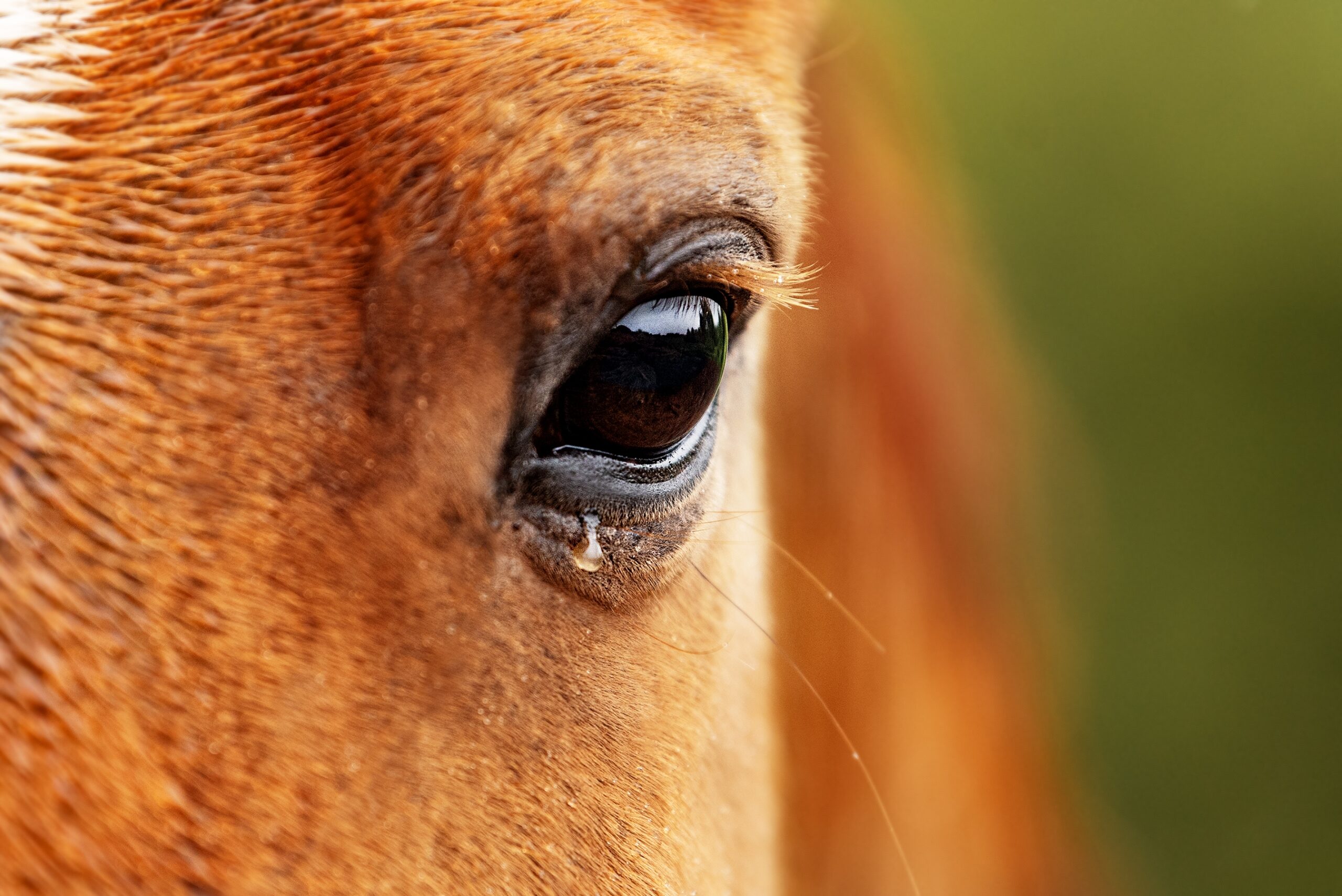
Hint: Beneath the stoic exterior of these majestic beings lies a complexity of emotion that mirrors our own inner turmoil. In the depths of their psyche, a darkness can take root, one that dulls the spark in their eyes and weighs heavy on their spirit. This condition challenges our understanding of animal consciousness.
A) Anxiety
B) Depression
C) Bipolar disorder
D) Schizophrenia
Answer: B) Depression
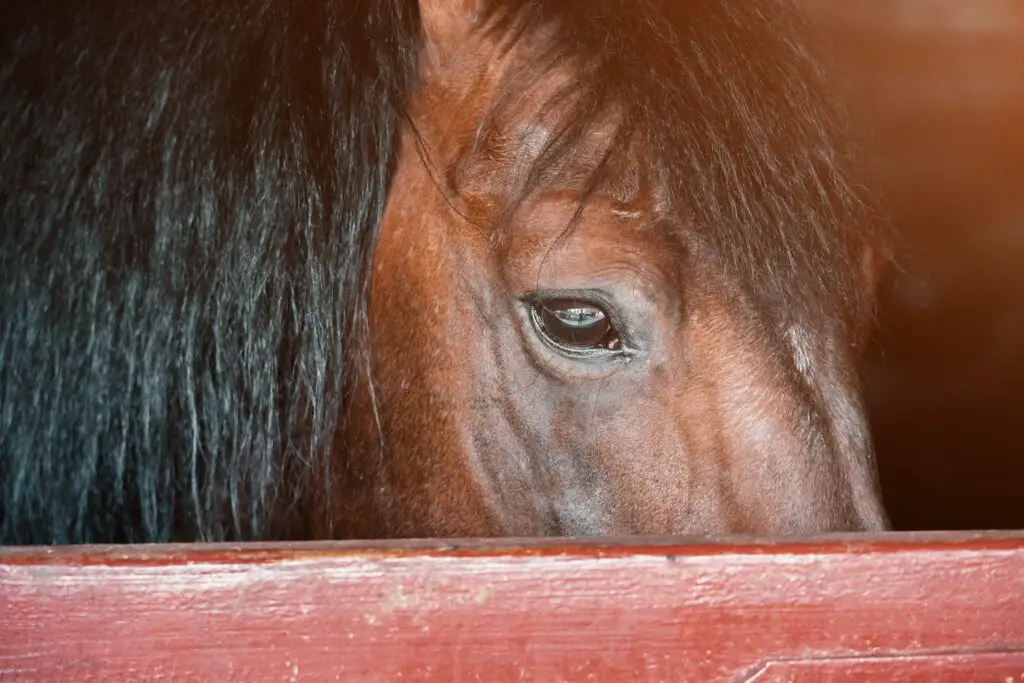
Believe it or not, horses can indeed suffer from depression. These sensitive souls can experience emotional lows that go beyond just having an off day. Signs of equine depression can include lethargy, loss of appetite, decreased interest in surroundings, and changes in sleep patterns. It’s like they’ve lost their zest for life, even when the pasture is green and the sun is shining.
What causes a horse to feel blue? Often, it’s linked to changes in their environment or routine. Horses are creatures of habit and social animals by nature. Isolation, lack of exercise, or sudden changes in their living situation can trigger depression. Even the loss of a companion (horse or human) can lead to grief and depression. Treatment often involves increasing social interaction, providing more turnout time, and introducing enrichment activities. In some cases, anti-depressant medications (yes, for horses!) might be prescribed.
10: What form of physical interaction do horses prefer when bonding with humans?
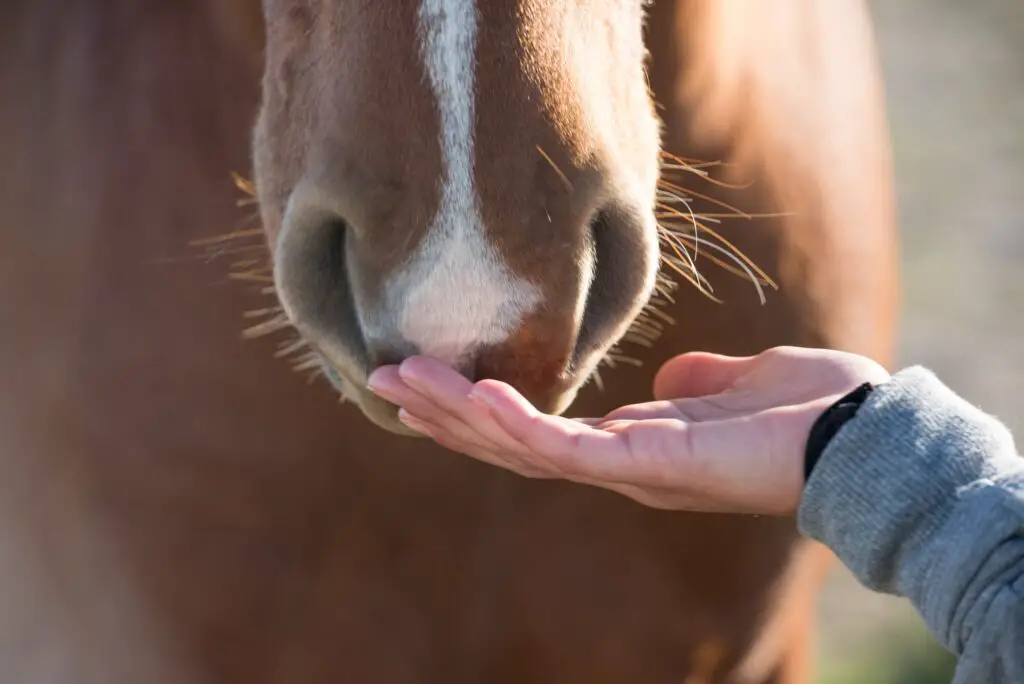
Hint: In the subtle dance of interspecies connection, these creatures seek a touch that echoes the gentleness of their herd interactions. The language of their affection is written not in grand gestures, but in the delicate whispers of skin on skin. This preference often surprises well-meaning humans.
A) Vigorous back rubbing
B) Firm patting
C) Gentle scratching or nibbling
D) Hugging around the neck
Answer: C) Gentle scratching or nibbling
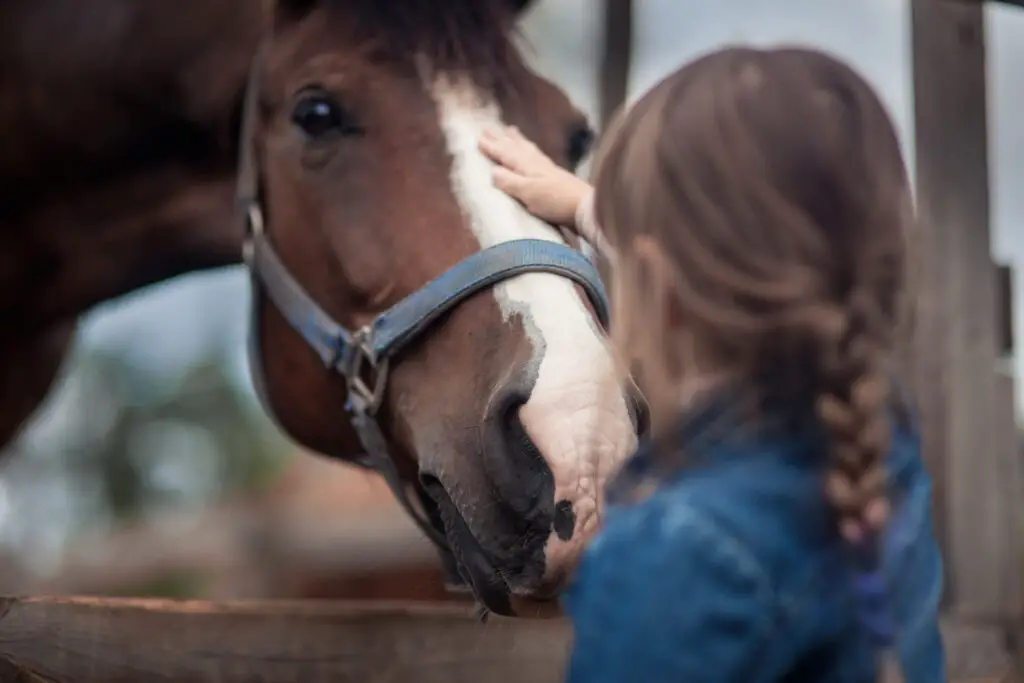
When it comes to showing affection, horses prefer the gentle touch. Their go-to move is a soft nibbling or lipping motion, often aimed at your arms, shoulders, or hair. This behavior mimics how horses groom each other in the wild – a sign of bonding and trust within the herd. So if a horse starts giving you little nibbles, take it as a compliment – you’ve been accepted into their inner circle!
This grooming behavior isn’t just about cleanliness; it’s a social activity that releases endorphins, making both the groomer and the groomee feel good. Horses may also show affection by gently breathing into your face or standing close to you. They’re not big on pats or hugs (which can actually be intimidating to them), preferring these more subtle signs of friendship.
11: What unique characteristic of a horse’s digestive system?
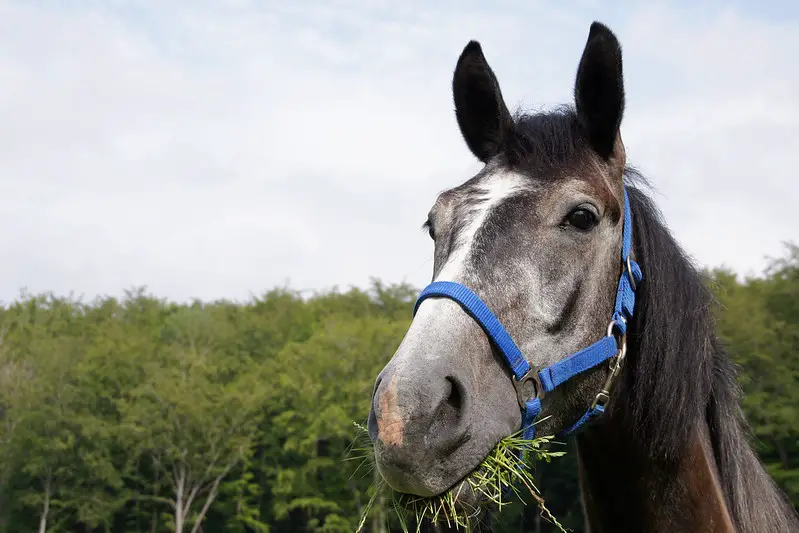
Hint: In the intricate labyrinth of their internal anatomy lies a peculiarity that both defines and constrains their relationship with food. This physiological quirk demands constant vigilance in their dietary habits. It’s a feature that, while protective in one sense, leaves them vulnerable in ways that would seem alien to most other creatures.
A) Multiple stomachs like a cow
B) Ability to digest cellulose without bacteria
C) Inability to vomit
D) Stomach that shrinks when empty
Answer: C) Inability to vomit
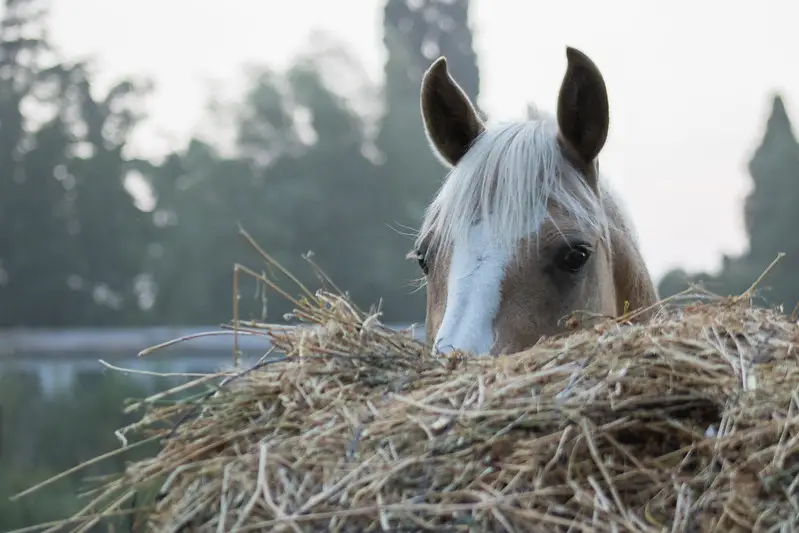
Horses are physically unable to vomit due to the unique structure of their digestive system. This inability is primarily due to the strength of the cardiac sphincter, a ring of muscle that closes off the stomach from the esophagus. In horses, this sphincter is exceptionally strong, effectively creating a one-way valve that prevents the backflow of stomach contents.
While this adaptation prevents choking on regurgitated food, it also means that any toxins or inappropriate substances a horse ingests cannot be expelled through vomiting. This makes horses particularly vulnerable to colic and other digestive issues. Their digestive system is designed for near-constant grazing on fibrous plants, and any disruption to this pattern can lead to serious health problems.
12: What can newborn foals do within hours of birth?
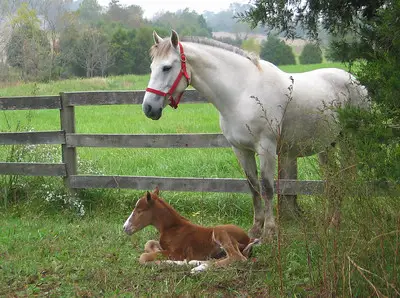
Hint: In the first moments of life, these young creatures defy the expectations of fragility associated with newborns. Nature has endowed them with an ability that seems to compress weeks of development into mere hours. This precocious talent speaks to the harsh realities of their wild origins.
A) Recognize their mother’s voice
B) Gallop at full speed
C) Find hidden food sources
D) Swim across rivers
Answer: B) Gallop at full speed
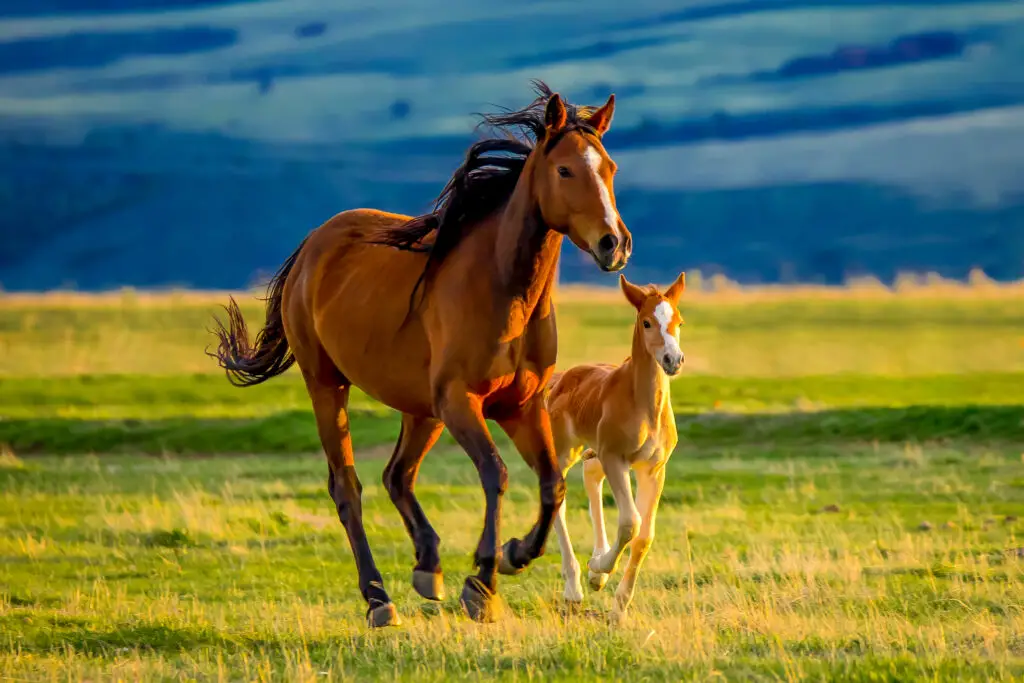
Newborn foals are nature’s ultimate overachievers. Within just a few hours of entering the world, these wobbly-legged wonders can not only stand but can gallop at full speed. It’s like they’re born with an “emergency escape” button pre-installed, ready to flee from predators alongside their mothers almost immediately after birth.
This rapid development is possible due to several factors. Foals are born with long, sturdy legs that are nearly at their full adult length. Their bones are fully calcified, and their muscles are well-developed, allowing for immediate use. Additionally, the mare’s colostrum (first milk) is rich in nutrients and antibodies, providing the foal with an immediate energy boost. This ability to run so quickly after birth is in stark contrast to many other mammals, which may take days or even weeks to achieve similar mobility.
13: What unique feature of a horse’s eye contributes to their superior peripheral vision?

Hint: Within the liquid orbs that serve as their windows to the world, a subtle adaptation grants these creatures a perspective that seems almost supernatural to human understanding. This feature reshapes their very perception of reality, granting them a vigilance that has served their kind for millennia.
A) Rectangular pupils
B) Multiple lenses
C) Horizontally elongated pupils
D) Rotating eyeballs
Answer: C) Horizontally elongated pupils
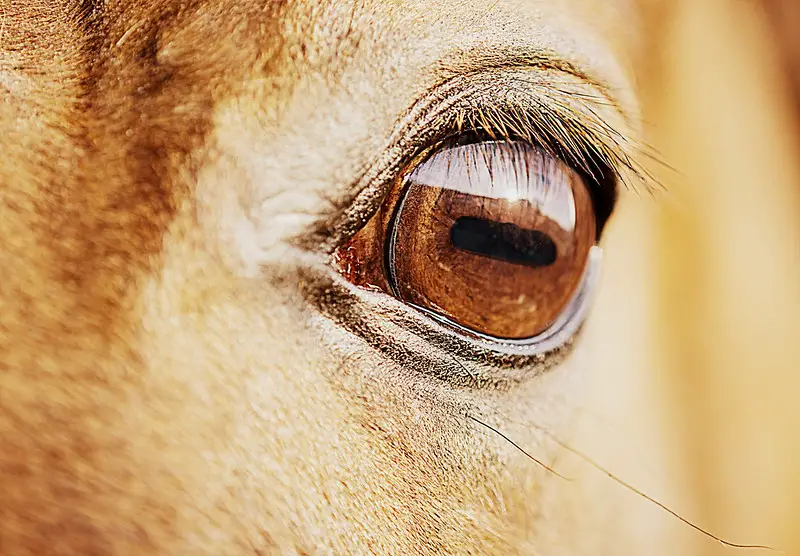
Horses have horizontally elongated pupils, a feature that looks like someone stretched out a cat’s eye sideways. This unique eye structure allows horses to have nearly 360-degree vision, with only small blind spots directly in front of their nose and behind their head. It’s like they have a built-in panoramic camera in their head, giving them a wide-screen view of the world.
The horizontal elongation of the pupil enhances the horse’s ability to scan the horizon, even when their head is lowered for grazing. This adaptation is crucial for detecting potential predators or threats from a wide range of angles. While this eye structure provides excellent peripheral vision, it does come with some trade-offs. Horses have less depth perception than humans and may struggle to focus on close objects directly in front of them. The positioning and structure of their eyes are perfectly suited to their nature as prey animals, prioritizing wide-ranging awareness over pinpoint focus.
14: What unusual ability allows horses to rest while remaining vigilant?
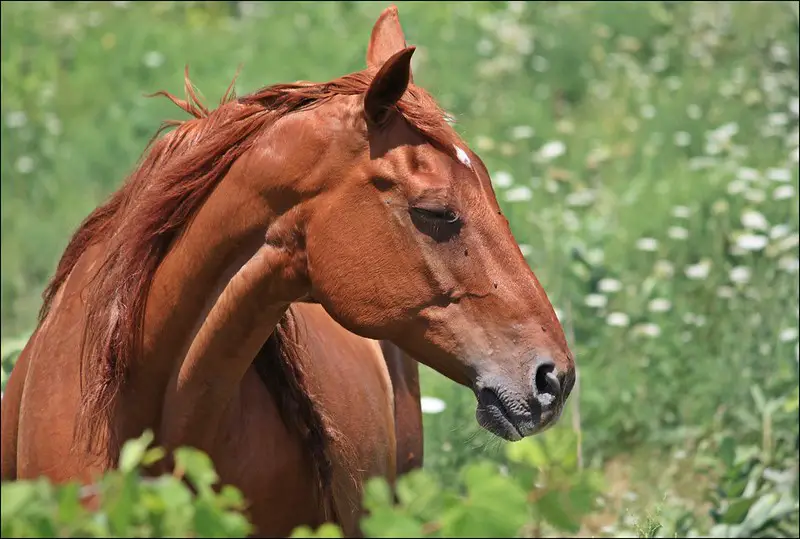
Hint: In the quiet moments between alertness and slumber, these majestic beings have mastered an art that seems to defy the very nature of rest. Through a quirk of evolution, they’ve developed a method of repose that keeps them perpetually poised between the worlds of wakefulness and sleep.
A) Sleeping with one eye open
B) Alternating brain hemisphere sleep
C) Micro-napping throughout the day
D) Locking their legs to sleep standing up
Answer: D) Locking their legs to sleep standing up
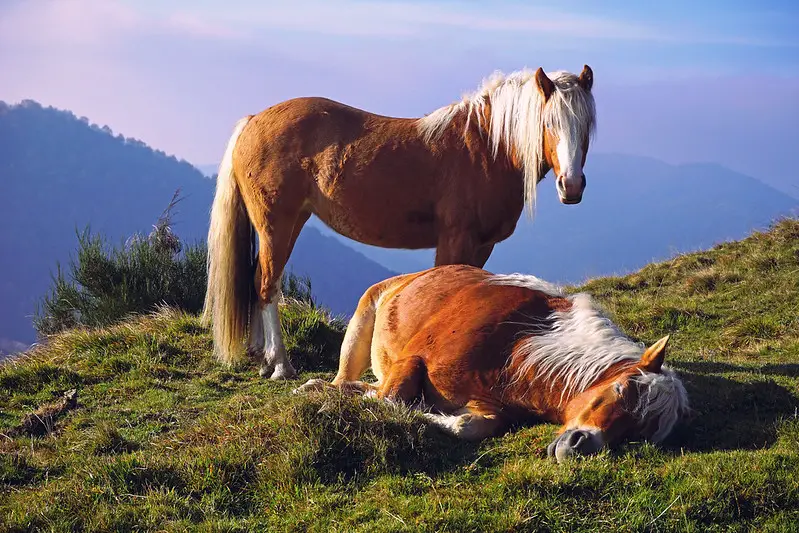
Horses have the remarkable ability to sleep while standing up, thanks to an anatomical feature called the stay apparatus. This adaptation allows horses to lock their leg joints in place, enabling them to rest and even achieve light sleep without lying down. It’s like they have a built-in kickstand that keeps them upright even when they’re catching some Z’s.
The stay apparatus is a system of ligaments and tendons that can support the horse’s weight without active muscle engagement. It effectively locks the knee, hock, and fetlock joints in an extended position. This ability serves several purposes: it allows horses to rest while remaining vigilant for potential threats, conserves energy, and reduces the risk of being caught off-guard by predators. While horses do need to lie down for deep, REM sleep, they can get much of their rest while standing. This adaptation is particularly important in the wild, where lying down for extended periods could make a horse vulnerable to attack.
15: How much water does an average horse drink per day?
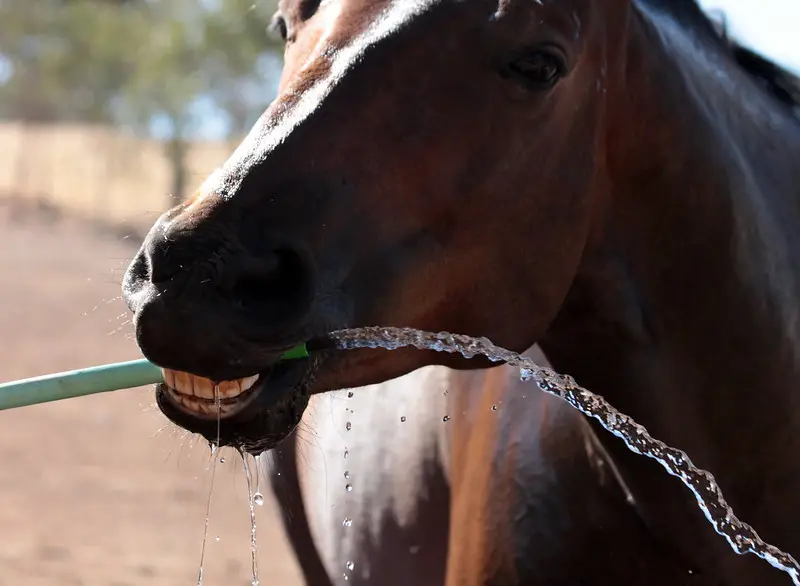
Hint: These equine water towers have a thirst that would put a camel to shame. Their daily intake is measured not in cups or gallons, but in quantities that would overflow your average bathtub. It’s a volume that speaks to the intense metabolic demands of their magnificent bodies.
A) 1-3 gallons
B) 5-10 gallons
C) 15-20 gallons
D) 25-30 gallons
Answer: B) 5-10 gallons

Horses are the champion drinkers of the barnyard, gulping down an impressive 5-10 gallons of water per day under normal conditions. That’s about 20-40 liters, or the equivalent of filling and emptying a medium-sized bucket several times over! This substantial water intake is crucial for maintaining proper hydration, supporting digestive function, and regulating body temperature in these large animals.
The exact amount of water a horse drinks can vary significantly based on factors such as temperature, humidity, activity level, and diet. For instance, a horse’s water consumption may double or even triple in hot weather or during intense exercise. A typical 1,000-pound (450 kg) horse might drink 30-50 liters of water per day under normal conditions. This high water requirement underscores the importance of providing horses with constant access to clean, fresh water.
16: What is the gestation period for a mare?
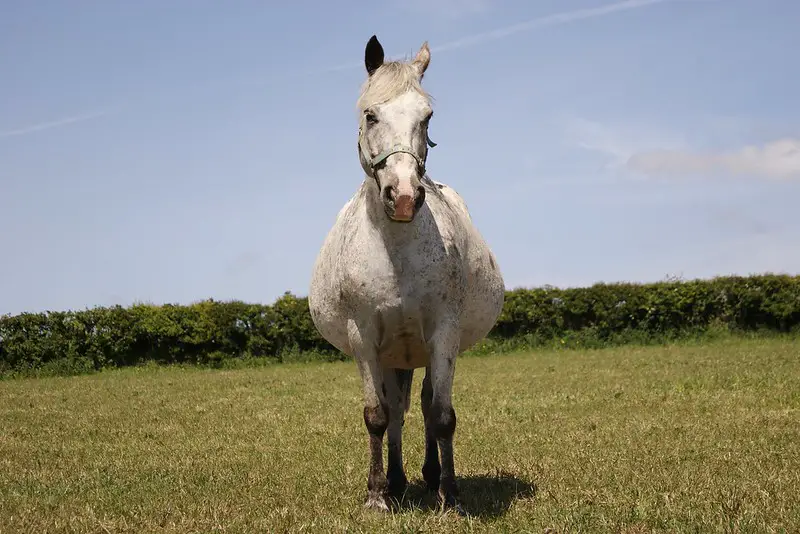
Hint: When it comes to equine pregnancy, patience isn’t just a virtue – it’s a necessity! These mamas-to-be carry their foals for so long, you’d think they were baking a whole herd. It’s a wait that tests the endurance of both mares and their anxious human caretakers.
A) 6 months
B) 9 months
C) 11 months
D) 14 months
Answer: C) 11 months
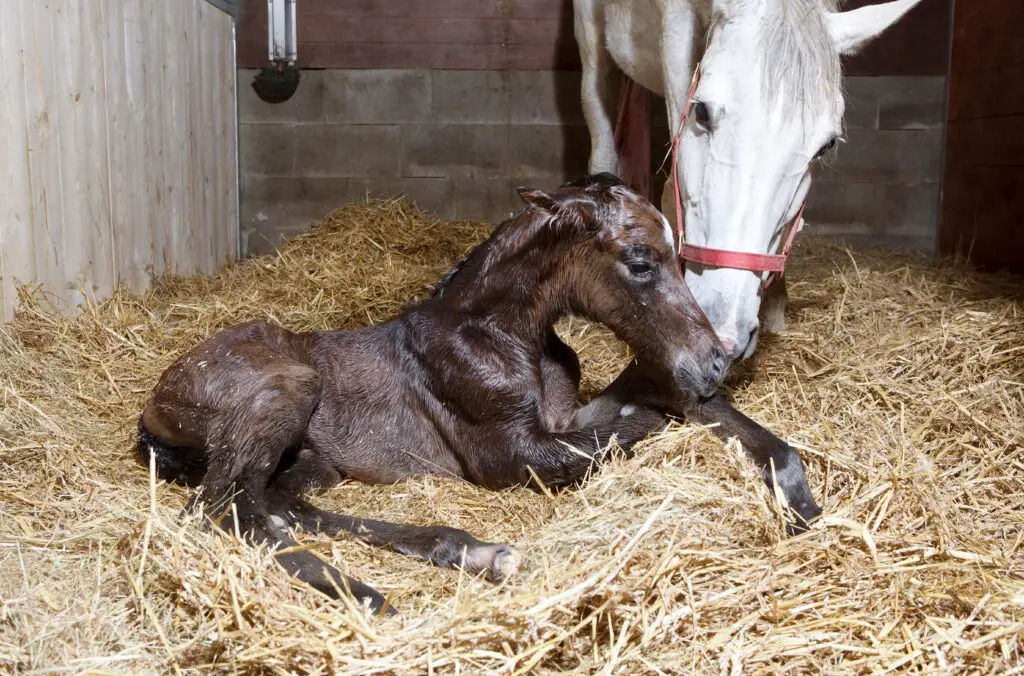
Horse mamas are the champions of patience, carrying their foals for a whopping 11 months! That’s right, these equine moms-to-be are pregnant for nearly a year. The average gestation period is about 340 days, but it can range from 320 to 360 days. That’s like being pregnant for three human trimesters, and then saying, “You know what? Let’s add a couple more months for good measure!”
This marathon pregnancy isn’t just for show – it serves an important purpose. The long gestation allows foals to develop more fully before birth. When they’re finally born, foals are already equipped with long legs and are ready to run within hours. It’s nature’s way of ensuring that these prey animals hit the ground running (literally!). The lengthy pregnancy also means that breeders have to plan carefully. Most aim for spring births when the weather is mild and there’s plenty of fresh grass for mom and baby.
17: What is the average lifespan of a domesticated horse?
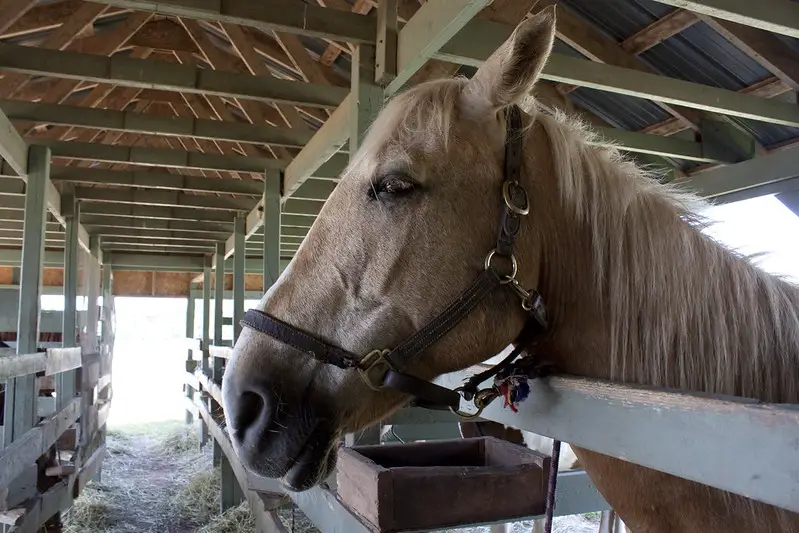
Hint: These majestic creatures have a longevity that might surprise you, especially when compared to their wild counterparts. Modern care has extended their years far beyond nature’s original design, turning what was once a brief candle into a lasting flame.
A) 10-15 years
B) 15-20 years
C) 25-30 years
D) 35-40 years
Answer: C) 25-30 years

Domesticated horses have hit the longevity jackpot, with an average lifespan of 25-30 years. This is a significant increase from their wild relatives, which typically live only 15-20 years. It’s like horses have discovered the fountain of youth, and it’s filled with good veterinary care and regular meals!
Several factors contribute to this extended lifespan. Advances in veterinary medicine, nutrition, and overall horse management practices have played a crucial role. Regular check-ups, dental care, and parasite control have significantly reduced many health issues that once shortened horses’ lives. Some horses even live well into their 30s or 40s, with the oldest recorded horse living to the ripe old age of 62! However, just like humans, a horse’s quality of life in its later years depends on good care throughout its life.
18: How much saliva does a horse produce in a day?
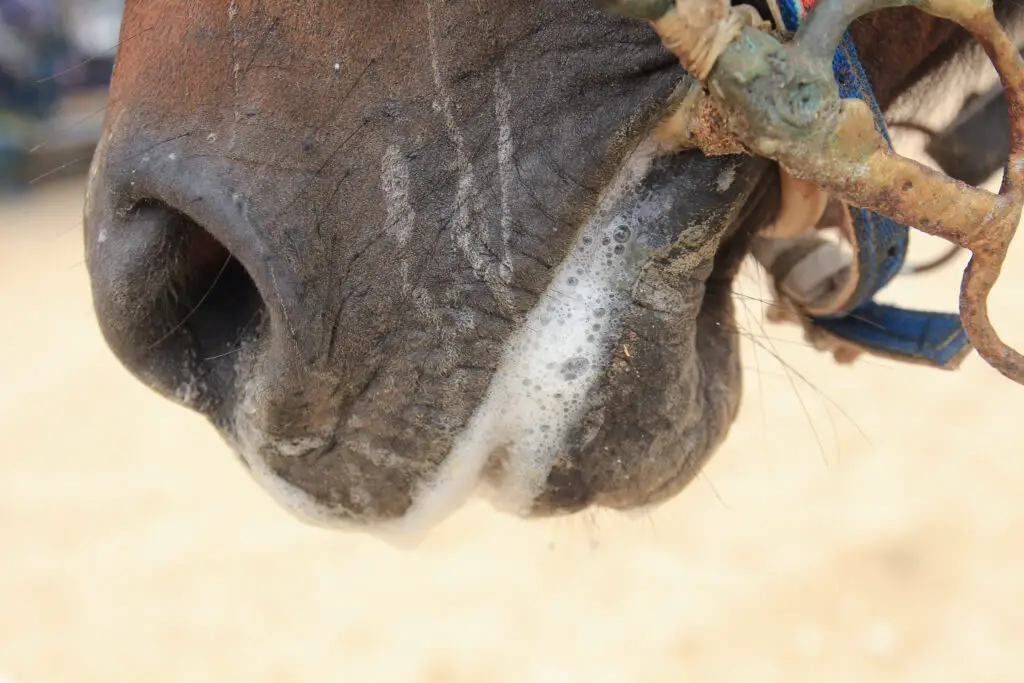
Hint: These equine drool machines could put a St. Bernard to shame! Their daily output is measured not in cups, but in volumes that would fill a small aquarium. It’s a flood of spit that plays a crucial role in their digestive health.
A) About 1 gallon
B) About 5 gallons
C) About 10 gallons
D) About 15 gallons
Answer: C) About 10 gallons
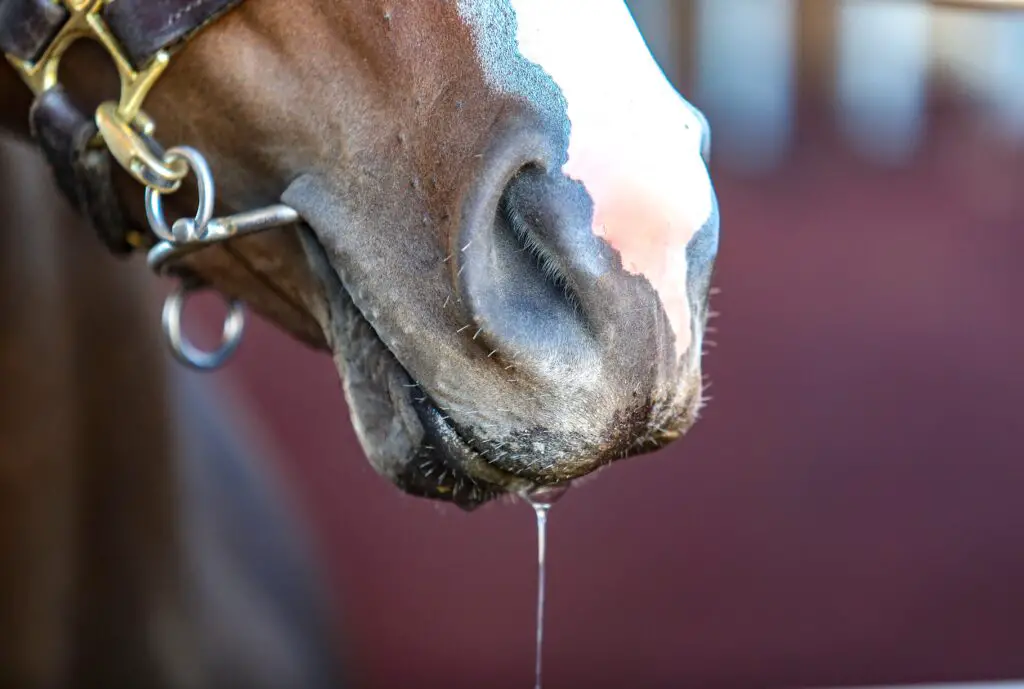
Hold onto your hay bales, because horses are veritable saliva factories! These grass-munching marvels produce approximately 10 gallons of saliva a day. That’s about 40 times the amount humans produce, enough to fill a small kiddie pool or keep a very thirsty person hydrated for a week!
But this isn’t just a case of horses being sloppy eaters. All this saliva serves a crucial purpose in their digestive system. It helps soften their food, making it easier to swallow and digest. More importantly, horse saliva is rich in bicarbonate, which acts as a natural antacid. This is especially important because horses have a constant flow of stomach acid, even when they’re not eating. The steady stream of alkaline saliva helps balance their stomach pH and protect against ulcers. It’s nature’s way of ensuring these grazing machines can keep on munching without giving themselves equine heartburn. So next time you see a horse chomping away, remember – there’s a lot more going on in that mouth than meets the eye!
19: How quickly can a horse deliver a kick from a standing position?
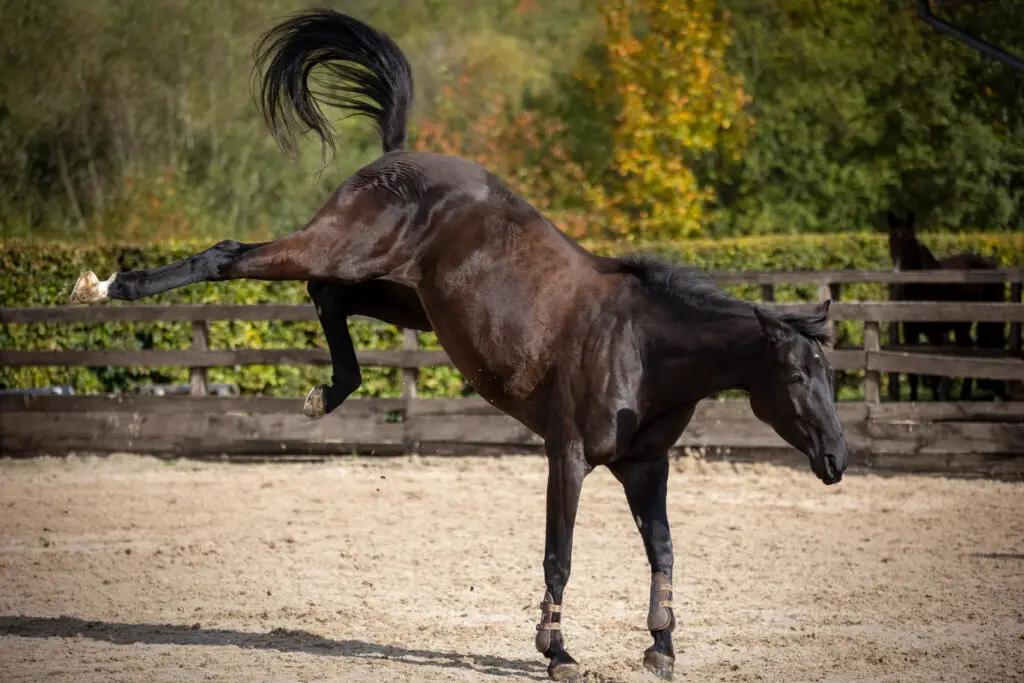
Hint: These equine martial artists have a lightning-fast defense mechanism that would make Bruce Lee jealous. We’re talking about a reaction time that’s quicker than you can say “Ouch!”
A) 0.3 seconds
B) 0.7 seconds
C) 1.2 seconds
D) 1.6 seconds
Answer: A) 0.3 seconds

Horses are the ninjas of the animal world when it comes to kicking speed. They can go from standing still to delivering a powerful kick in just 0.3 seconds! That’s faster than you can blink, which typically takes about 0.3 to 0.4 seconds. In comparison, the average human reaction time is a sluggish 1.6 seconds. By the time you’ve realized a horse is about to kick, you’d already be feeling it.
This incredible speed is a crucial defense mechanism for horses. In the wild, this lightning-fast reaction could mean the difference between fending off a predator and becoming dinner. The horse’s powerful hind legs can generate a force of up to 2,000 pounds per square inch. Combine that with their speed, and you’ve got a formidable natural weapon. This is why it’s so important to approach horses carefully from the side or front, where they can see you, and to always be aware of their body language. A horse’s kick is not just fast – it’s powerful enough to cause serious injury or even be fatal.
20: What feature of horse teeth allows them to maintain an effective grinding surface throughout their lives?
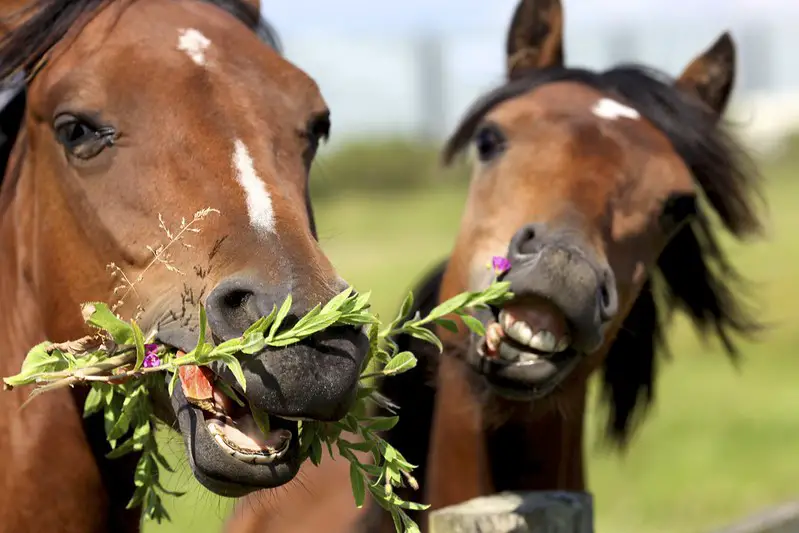
Hint: These equine chompers are like nature’s own conveyor belt, constantly replacing worn-out surfaces. It’s an adaptation that keeps these grass-munching machines in top form, no matter how many miles they put on their molars.
A) Multiple sets of teeth that grow in succession
B) Teeth that continuously grow and erupt
C) Enamel that regenerates monthly
D) Teeth that rotate to present fresh surfaces
Answer: B) Teeth that continuously grow and erupt
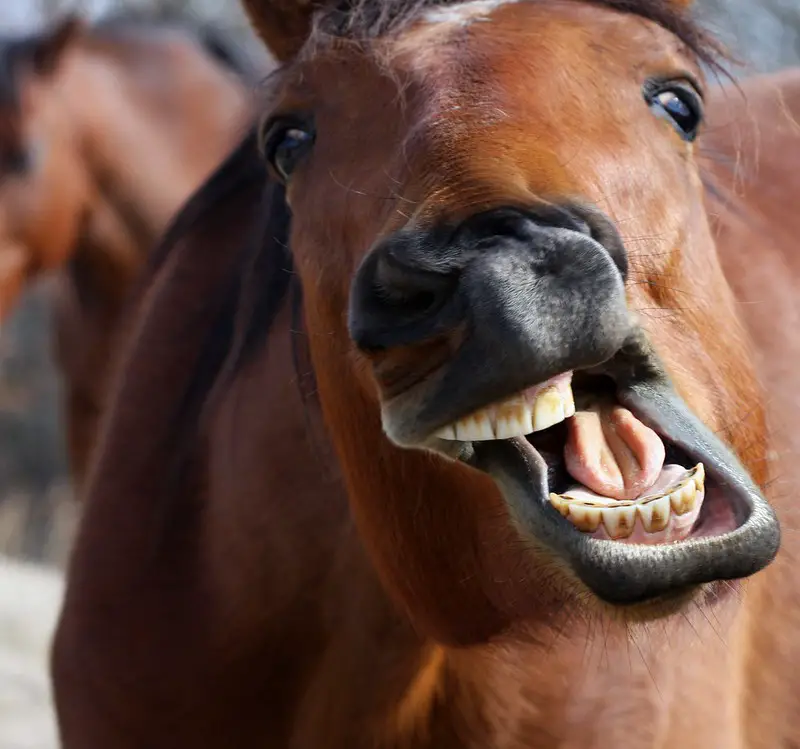
Horse teeth are the gift that keeps on giving! These remarkable chompers are hypsodont, meaning they have long crowns that continue to erupt throughout the horse’s life. It’s like they have a built-in tooth renewal system, with their teeth growing about 1/8 inch per year to compensate for wear. This continuous growth allows horses to maintain effective grinding surfaces throughout their lives, essential for their herbivorous diet.
The composition of horse teeth is a marvel of natural engineering. They’re made up of four main tissues: enamel (the hardest substance), dentin (which makes up the bulk of the tooth), cementum (which covers the roots), and pulp (containing blood vessels and nerves). The arrangement of these tissues creates a self-sharpening surface as the tooth wears down. This adaptation is crucial for horses, who spend up to 18 hours a day grazing on tough, fibrous plants. Without this continuous growth, their teeth would wear down to nubs in no time.
21. What part of human anatomy corresponds to a horse’s “knee”?
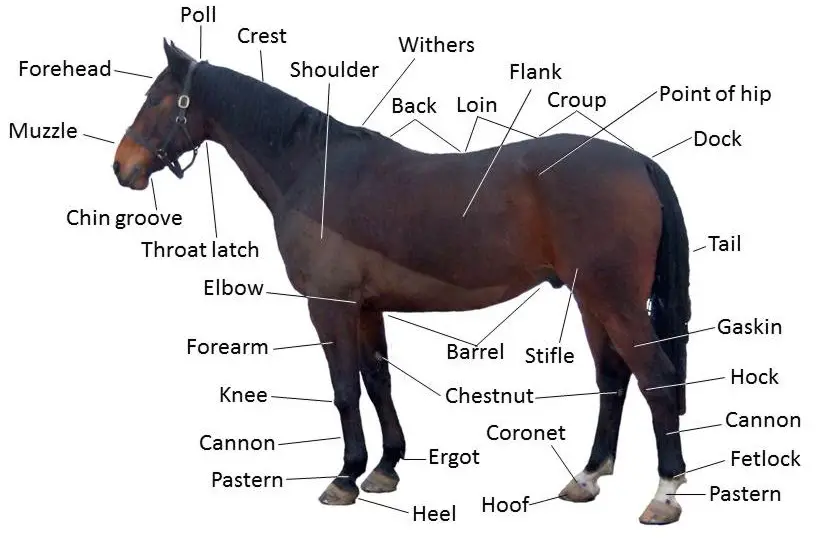
Hint: This anatomical quirk might make you do a double-take when looking at a horse’s leg. It’s a feature that showcases how evolution has reshaped the equine body for speed and efficiency, turning what we think of as a knee into something quite different.
A) Elbow
B) Ankle
C) Wrist
D) Hip
Answer: C) Wrist
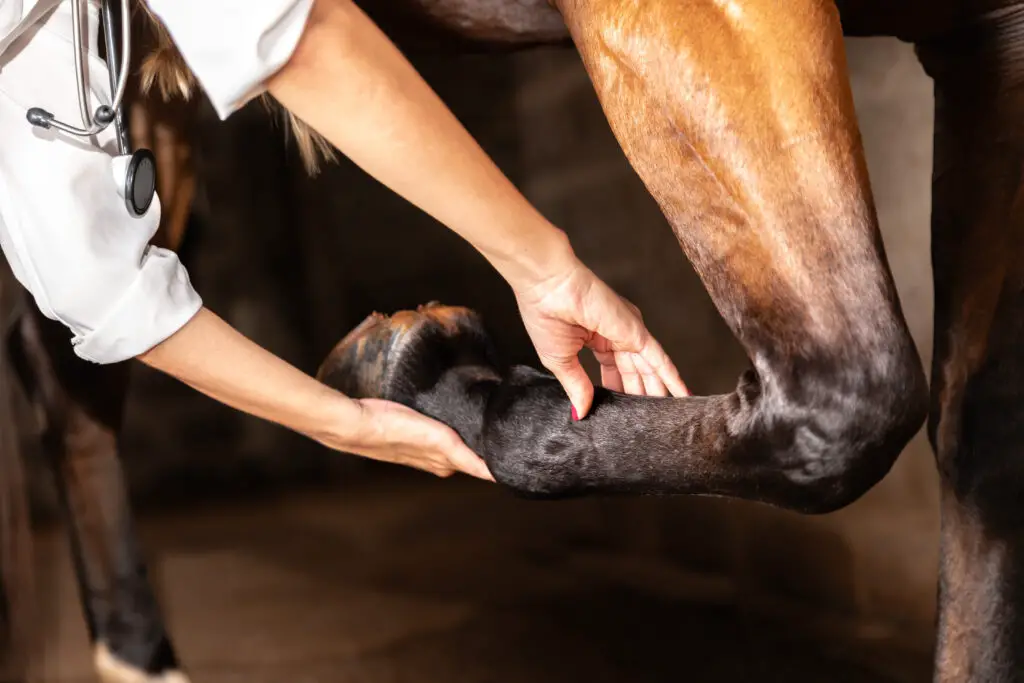
Here’s a mind-bender for you: what we call a horse’s “knee” is actually equivalent to our wrist! That’s right, when you’re looking at a horse’s front leg, what appears to be its knee is really more like the joint at the top of your hand. It’s as if horses are permanently standing on their fingertips, with their true elbow up near their body.
This unique arrangement is the result of millions of years of evolution, optimizing horses for speed and efficiency. The horse’s true elbow is up high on the leg, close to the body. What we see as the “knee” is actually the carpus, which corresponds to our wrist bones. Below that are elongated metacarpal bones (equivalent to the bones in our palm), and then the pastern and hoof, which are like a single giant finger. This structure allows for longer stride length and more efficient energy use when running.


